
A Plant-Love Story: A Palm Tree on an Island of California
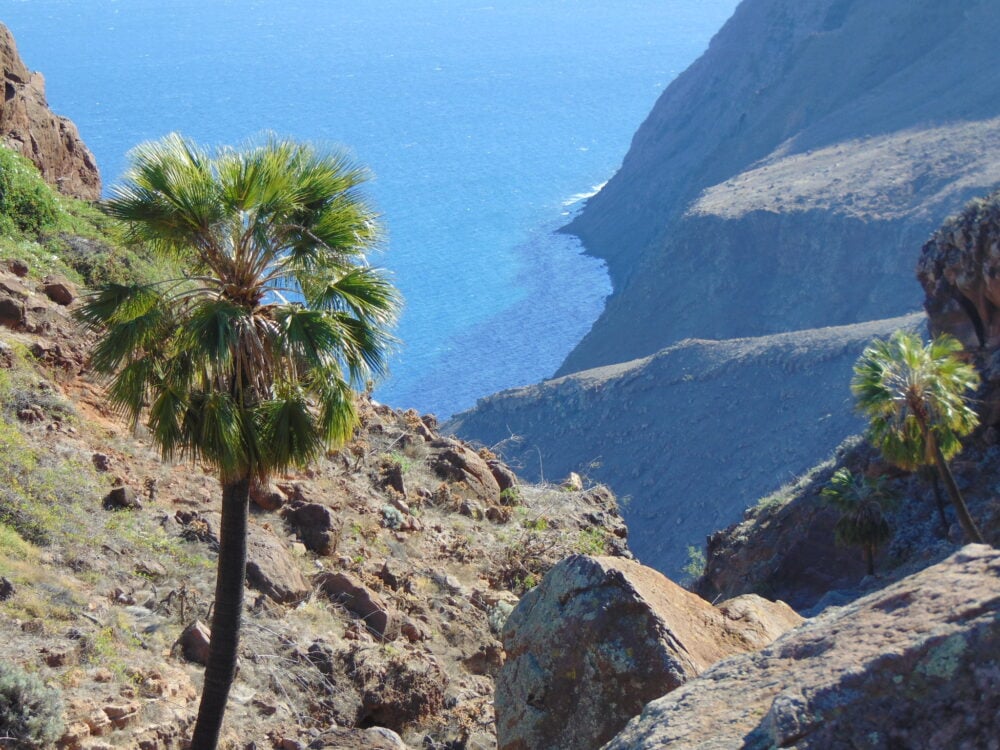
Contributor
- Topics: Plants You Need
Fall 2023
Wallace Stevens wrote in his poem, “Of Mere Being,” about a “gold-feathered bird” that “sings in a palm, without human meaning, without human feeling.” Standing “on the edge of space,” this “palm at the end of the mind” is “beyond the last thought.” The palm grows and the bird sings and its feathers shine beyond our human experience, apart from us, yet alive to our imaginations and hearts.
In Greek mythology, the Hesperides were nymphs of the evening star (Venus, or Hesperos) who tended a blissful garden. In some tellings, they represented a place beyond Gibraltar where the light of the setting sun gilded the western edge of the seafaring world.
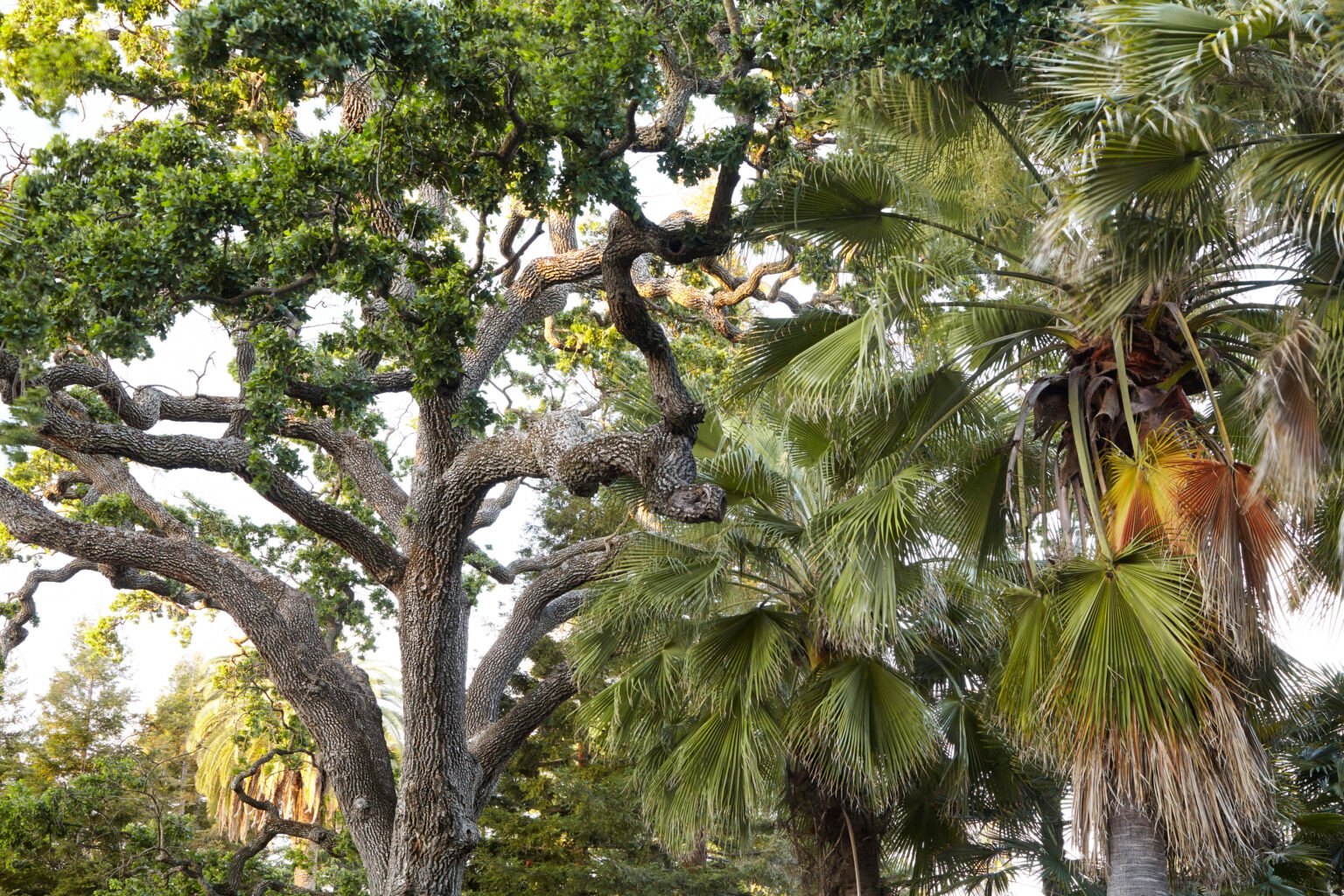
There is a palm like Stevens’s palm growing at the edge of our space and our consciousness. The westernmost palm species of the Americas, the Guadalupe palm (Brahea edulis), stands on the precipices of Guadalupe Island, west of the West Coast. Mexico’s Isla Guadalupe, “one of the most biodiverse and unique islands in the Pacific,” existed for a long time mostly—though surely not wholly—outside human ecology and awareness. A place hardly touched by humans is no garden. No Hesperides tended golden apples there. But the idea of a “wild” place with unique plants unleashes a thrill in me and so many people who tend gardens. Yes, it’s a covetous thrill, but it’s also an excitement about a place apart from us. The idea of a singular palm in a wild, Californian place feels like a beautiful myth that might be just beyond the western horizon.
After European sailors encountered the island in the early nineteenth century, they left hungry goats as food for future visits; by the 1990s, the goats had eaten its scrublands, forests, and woodlands barren in most places. Soils eroded, springs dried up, and many endemic plants and birds went extinct. Since 2003–2006, Mexico’s project to remove the goats and other extraordinary restoration efforts have dramatically changed the island and the palm’s fate. In 2005, the Mexican government made it and surrounding waters a biosphere reserve. A wild, isolated place destroyed by humans is abject. Poignant is a place that humans have tended in order to restore some semblance of its earlier life.
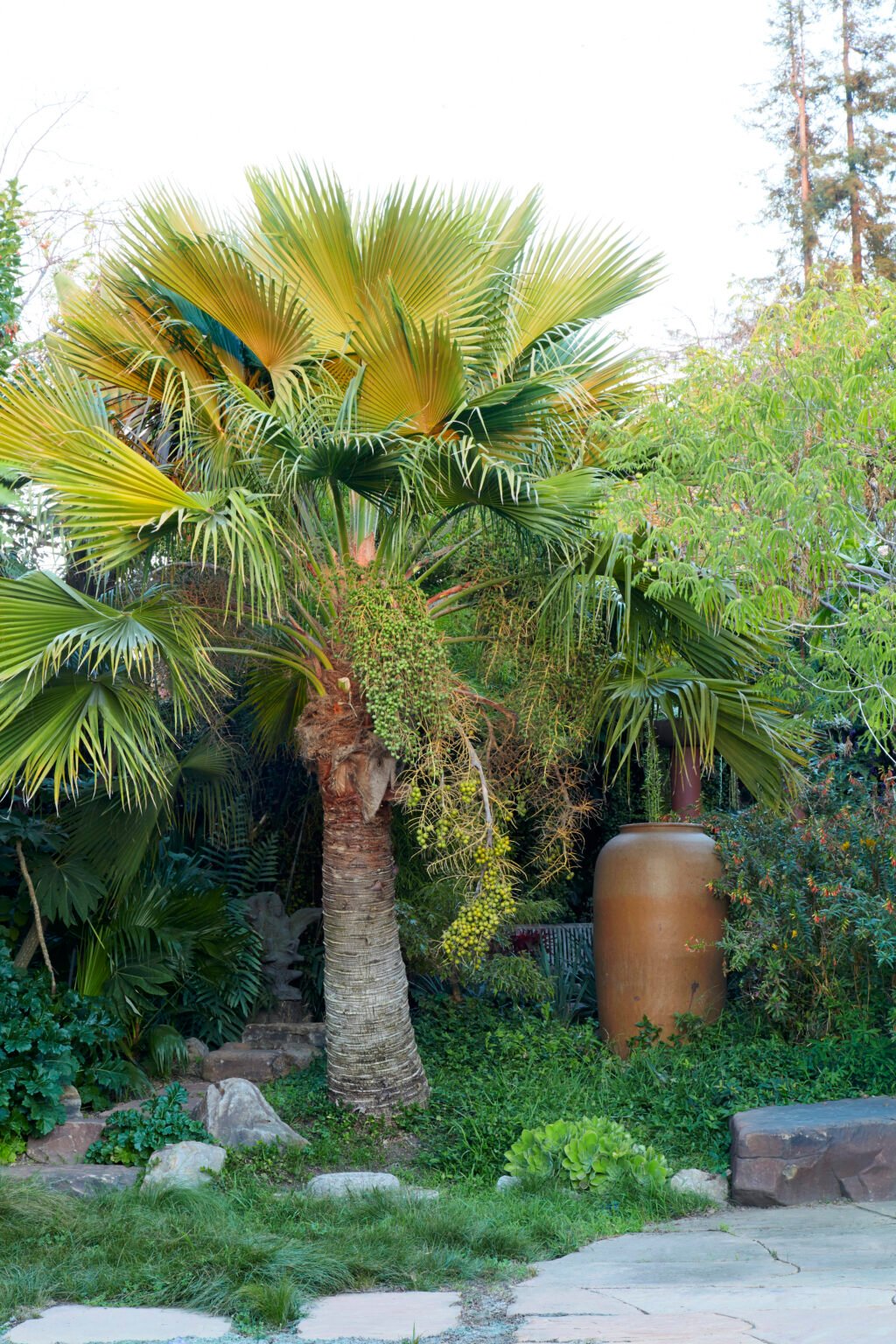
My love of palms effloresced from the ground of my love of California natives. When palms first filled my imagination and became an obsession, I was in my last year of high school, enrolled in a California natural history course and a biology course. Elna Bakker’s An Island Called California guided our study of the state’s landscapes with chapter titles like “Woodpeckers in Oak Trees.” I had been taking my copy of the Pacific Coast Tree Finder on every hiking and camping trip since I was eight; Bakker’s book was now the runway for my imagination to take off into the universe of California native plants and ecosystems, fueled by field trips to Point Lobos State Natural Reserve, Lassen Volcanic National Park, Big Sur, and the High Sierra. I missed our spring trip to Anza-Borrego Desert State Park, and my classmates, aware of my ballooning obsession, told me I would have loved seeing the native desert fan palm (Washingtonia filifera) in habitat.
On spring break that year, my family and I visited my grandparents in Miami, where they maintained a big garden full of Florida natives, edibles, and plenty of exotics, too. My step-grandmother had been a member of many horticultural societies, including the International Palm Society. Knowing of my interest in palms, she gave me her copy of Palms of the World, by James McCurrach, an elegant hardcover encyclopedia of cultivated palm species from 1960 with black-and-white photos evoking an expansive midcentury world of horticulture and plant exploration.
I took it back home with me to San Francisco and made McCurrach my Elna Bakker for palms, finding in its pages the rare species in my neighborhood that had been
mysteries. Two palm neighbors in particular corresponded to McCurrach’s entry for the Mexican blue palm (Erythea armata), member of a genus from Baja California and western Mexico named for one of the Hesperides, Erythreia, in recognition of its position at the western edge of the Americas, the sunset horizon. Botanists have subsumed it now into Brahea. Brahea armata is the most popular blue-silver palm in California and Southwest gardens.
Look west from the Pacific Coast of North America, past the sea stacks and breaking waves, and you might imagine the next stop is Japan or Hawai`i. If you’re on the Southern California coast, you can often see the Channel Islands, like Santa Rosa and Santa Cruz islands off Santa Barbara, or Santa Catalina off Palos Verdes. These Channel Islands can be considered the northern group of an archipelago of (Alta and Baja) California islands that ranges southward to Baja California’s Punta Eugenia, midway down the peninsula.
Flying into San Diego on clear evening, you can see Los Coronados, eight miles off Tijuana, the largest 500 feet above sea level and rich with maritime succulent scrub—including five dudleyas, five cactus species, California sagebrush (Artemisia californica), bladderpod (Peritoma arborea), toyon (Heteromeles arbutifolia), lemonade berry (Rhus integrifolia), and splendid mariposa lily (Calochortus splendens).
Los Coronados are links in the chain of California islands that gives out just south of mighty Isla Cedros—home to garden favorite Cedros Island verbena (Verbena lilacina ‘De La Mina’) and Monterey-pine-clad highlands.
Farthest offshore is Guadalupe Island, a volcano in the ocean where the palm lives.
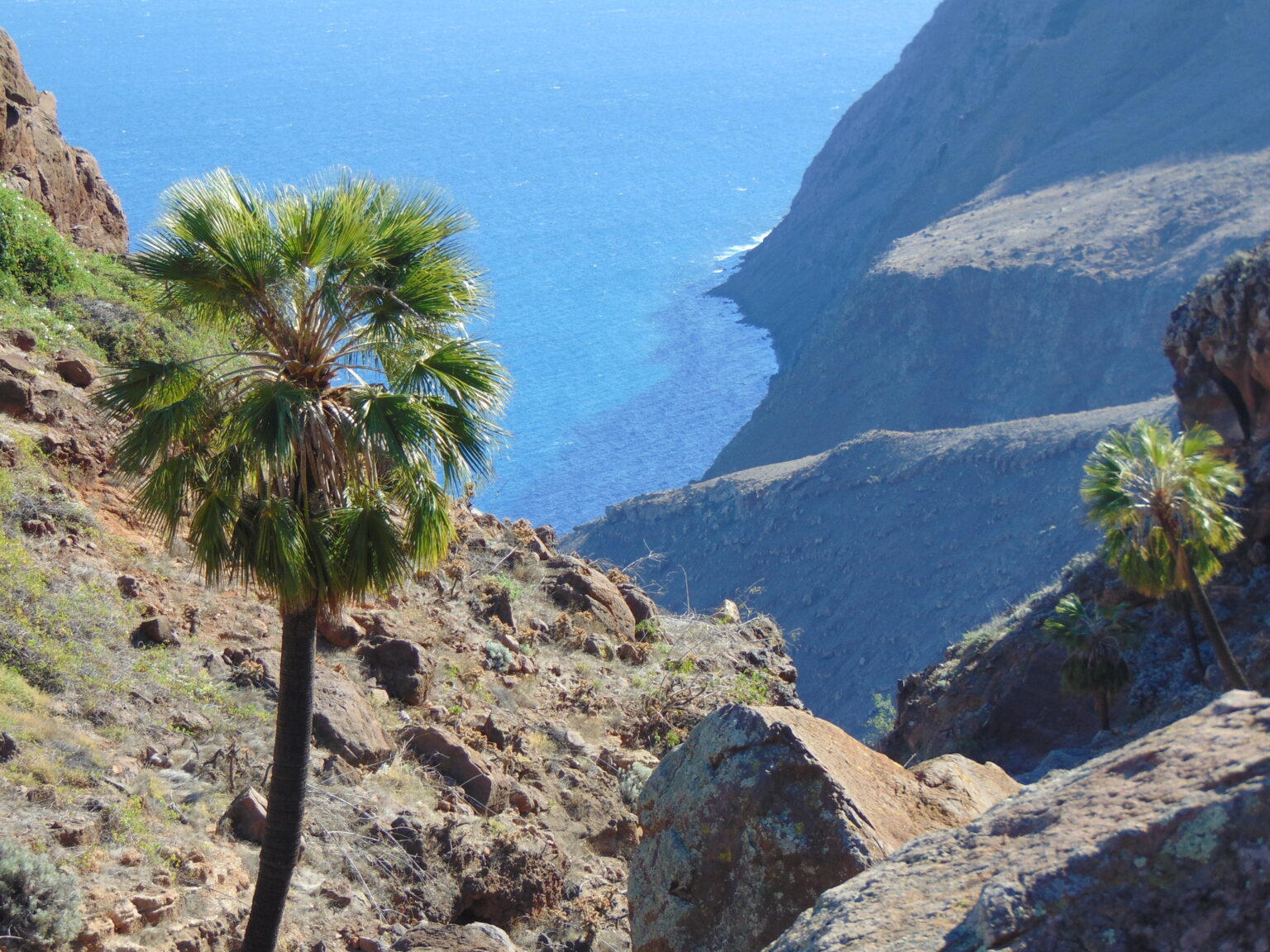
Where does California begin, or end? Baja California was the first California so named, and Cabo San Lucas, its southern tip, could be the start. By this historical-political definition, the Californias, Alta and Baja, end at the borders of Oregon, Nevada, Arizona, the Colorado River, and the Gulf of California.
Under a botanical definition, California takes up a different but overlapping space. The California Floristic Province—the realm of plants under a winter-wet (and mostly summer-dry) regime—rolls eastward from the Pacific, across the Coast Ranges and the Great Valley onto the heights of the Cascades, the Sierra Nevada, and the highest ranges of Southern California. It spills north into the Klamath Knot of Oregon and south into the wine country and conifer-clad spine of northwest Baja, the Sierra Juárez and Sierra San Pedro Martír. Here, you can smell redwood duff, coastal sage, tarweed (Madieae), blueblossom (Ceanothus thyrsiflorus), and mountain misery (Chamaebatia).
More Plant Love Stories
Manzanita (Arctostaphylos), triplet lily (Triteleia), wild lilac (Ceanothus), wild buckwheat (Eriogonum), western cypress (Hesperocyparis), oak (Quercus), tarweed: these groups among many proliferate in the California Floristic Province, some more diverse here than anywhere else.
Sure, Joshua trees (Yucca brevifolia) are Californian in the political and symbolic sense, but their plant realm, the Sonoran Floristic Province, runs east- and southward, its characteristic plant groups proliferating thataway. See the provinces mingling off I-5 over the Grapevine, just south of Gorman, where Highway 138 takes off into the Mojave Desert. There, in a single small valley, grew a colony of Joshua trees, probably the westernmost representatives of their range, a Sonoran droplet at the tip of the arrowhead of the Antelope Valley. (A fire took most of them out some years back.) To delve deeper into the mingling of the botanical provinces—the “vegetation tension zone”—visit the Whitewater Preserve just off I-10 near Palm Springs; you’ll drive, then hike, up out of the Sonoran into the increasingly Californian realm of plants.
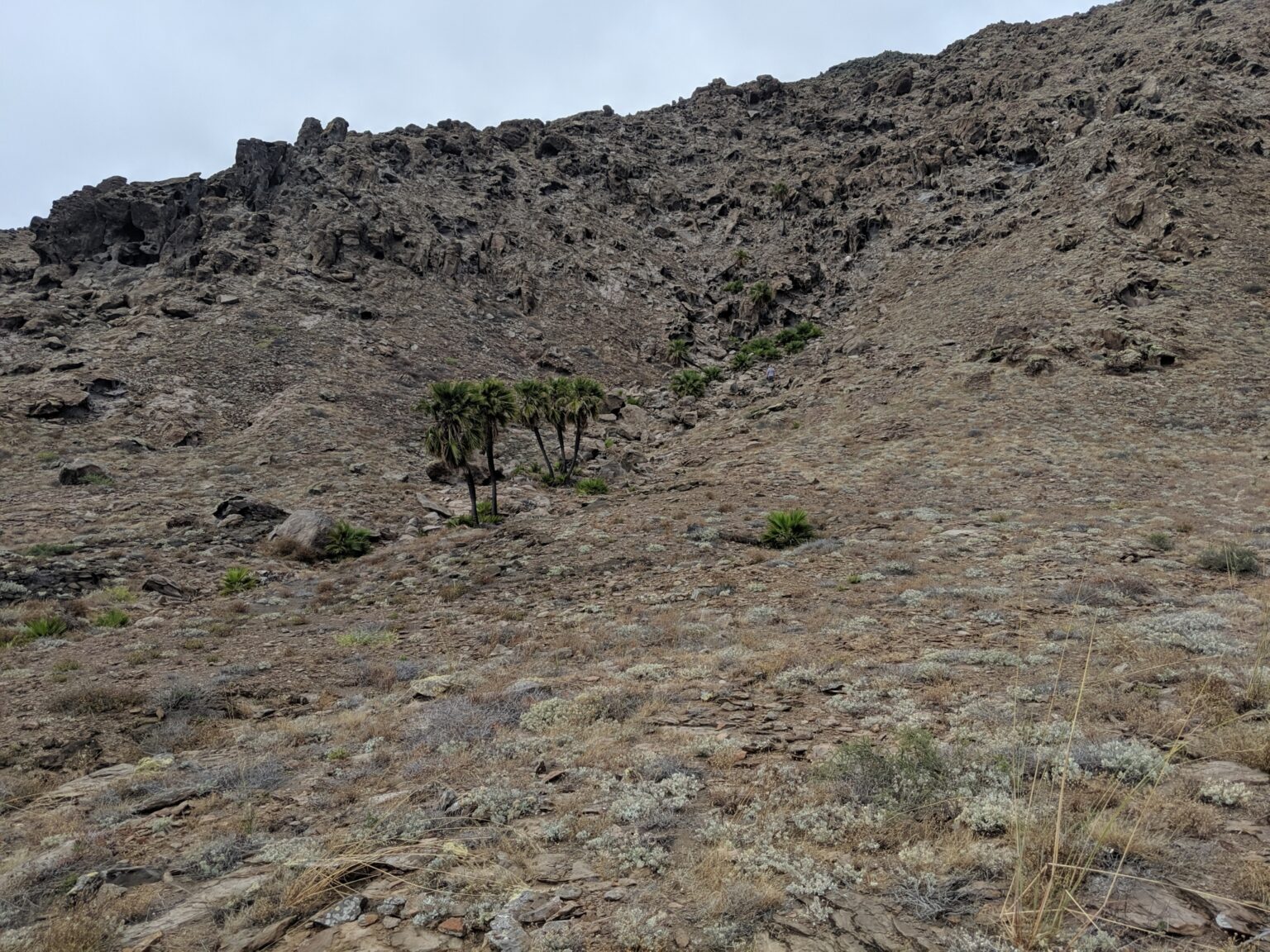
An arid island, a cloud forest, a coastal desert, a hotspot for endemics, a mingling of plant realms, a volcanic peak in the ocean—Guadalupe Island, Isla Guadalupe, is the southwesternmost outpost of the California Floristic Province. The product of two shield volcanoes, the 4,200-foot-high island is not only the tallest of the California islands, it also emerges from the deepest water (3,600 meters, or about 11,800 feet) off the continental shelf, and it’s far more isolated than even runner-up San Nicolas, the “Island of the Blue Dolphins” 70 miles off the Los Angeles coast. When sea levels were 400 feet lower during the last ice age, Guadalupe Island remained more than 100 miles from the coast while the other California islands’ ocean moats shrank, or even disappeared in the cases of Los Coronados and others.
Such isolation gave rise to a high percentage of endemic plants on Guadalupe Island. Elevation and distance from shore bathe it in the moist marine layer riding on prevailing northwesterly winds. It’s no wonder lichens thrive there. The prow of the island is an escarpment against which fog and clouds bank and rise to the crest, evaporating on the lee slope. Summertime satellite loops reveal a “vortex street” in the lee of the island, a series of swirls in the cloud deck downstream. Summer drought runs long, but winter rains leave five inches annually in the lower-elevation desert and likely much more in the higher altitudes. In some years, remnants of tropical storms punctuate the dry season and add to the total.
Before the goats, in the early 1800s, a significant part of the island was forested with pine, cypress (Hesperocyparis guadalupensis, endemic), island oak (Quercus tomentella, shared with the Channel Islands), palm, toyon (a large-fruited, tree-size variety), California juniper (Juniperus californica), and an intriguing extinct endemic plant in the olive family, Hesperelaea palmeri, an evergreen, yellow-flowering privet-like tree that has not been seen alive since the Victorian era.
Today, a young forest of Guadalupe Island pine (Pinus radiata var. binata) blankets the fog-drenched northwest slopes. Thick as grass, they are seedlings of a few veteran trees that survived 175 years while their progeny got munched. Since the goats’ removal in 2006, this two-leaf variety of the Monterey pine has proliferated into an increasingly dense fog-catching grove, watering the slopes with fog drip and helping dormant seeds and rootstocks of other native plants sprout. Crowns of broad fan leaves of veteran palms contrast from their fine young pine neighbors. From other old survivors scattered north and south across the island, new palm seedlings emerge, the first new palms in nearly two centuries with a chance to reweave the canopy and line the arroyos. Oaks, too, were once more numerous here with the pines and palms, just as they are elsewhere in Mexico and throughout the Southeast US. Now a tiny number of island oaks remain and their natural recruitment may be slower than that of the other species popping around them. Farther south, the remnants of the cypress forest suffered a fire in 2008 that killed many trees but unleashed seeds from serotinous cones and accelerated the recruitment of young plants.
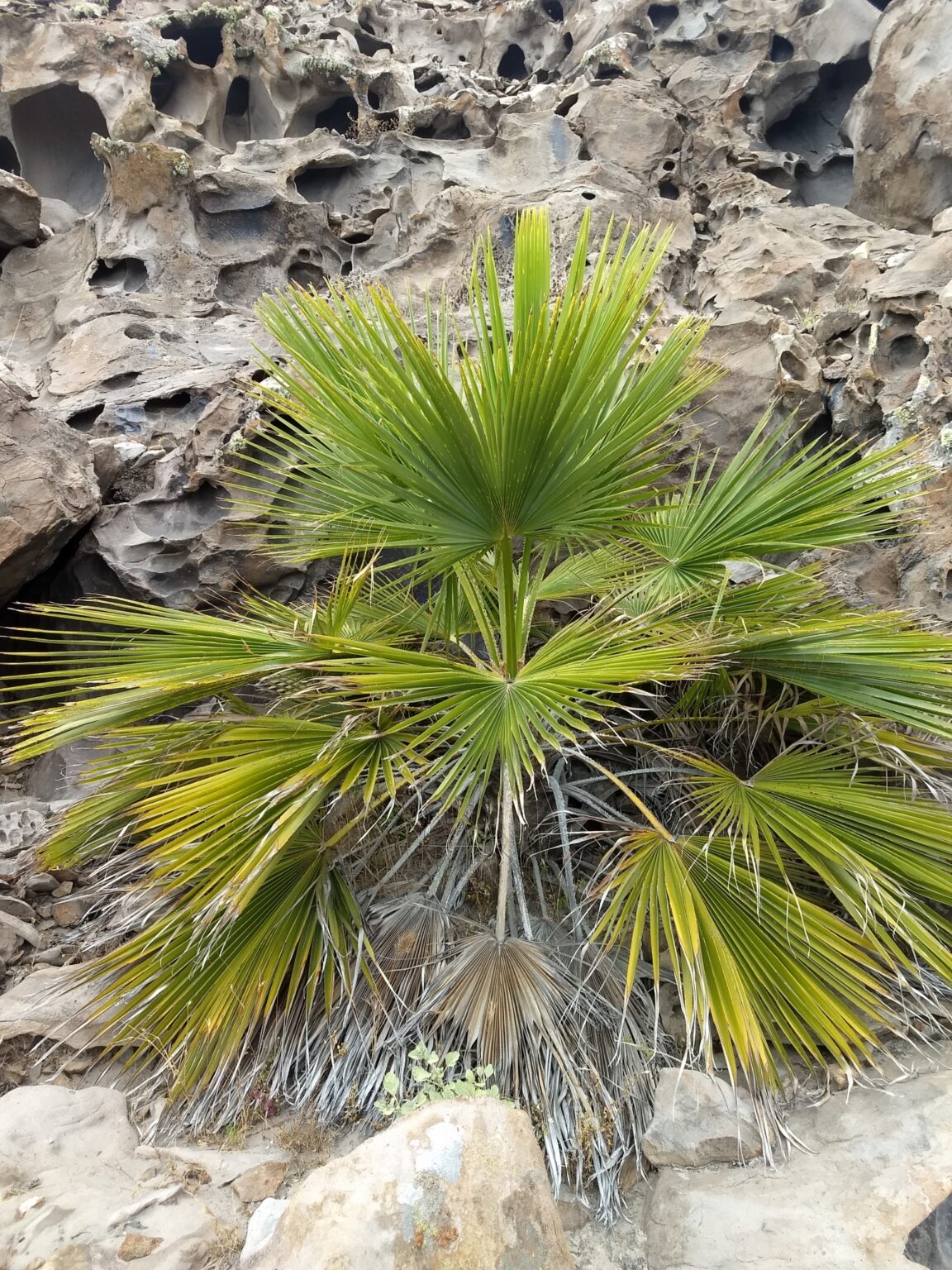
All over the island, not just in the fog-drippy pine areas, native plants like island nightshade (Solanum wallacei) and annual monkeyflower (Mimulus latifolius) have surged. Species never before recorded on the island, like the island ceanothus (Ceanothus arboreus), and others thought extinct, like an understory ceanothus species formerly recorded from the cypress forest, are reappearing from the seedbank. Three attractive endemics, a tarweed (Deinandra frutescens) and two plants in the California nursery trade—Guadalupe Island senecio (Senecio palmeri) and rock aster (Perityle incana)—are reoccupying the island from mother plants growing on inaccessible cliffs. One plant has repopulated the main island from its refuge on an islet.
The most popular horticultural introduction from the island is the Guadalupe palm. It is valued for its elegance, endurance, versatility, short stature, self-cleaning trunk, spineless leaves, and tolerance of a wide range of California conditions, from the chilly, blustery coast to the hot inland valleys. I look kindly on its self-sowing into neighborhood gardens, as along Marin Avenue in Berkeley, or on the west slope of Bernal Heights of San Francisco, a welcome weed from a far corner of California. Soon after Reid Moran’s monograph on the flora of Guadalupe Island was published, I planted a pair of the palms from 15-gallon containers as street trees in front of my house, along with fellow island natives snapdragon (Gambelia speciosa, formerly Galvezia) and rock aster. Now the palms are stately and implacable, with the potential to live at least another two centuries if they can evade the chainsaw. If not the most glamorous, it’s the most natural choice of palm for mild West Coast landscapes.
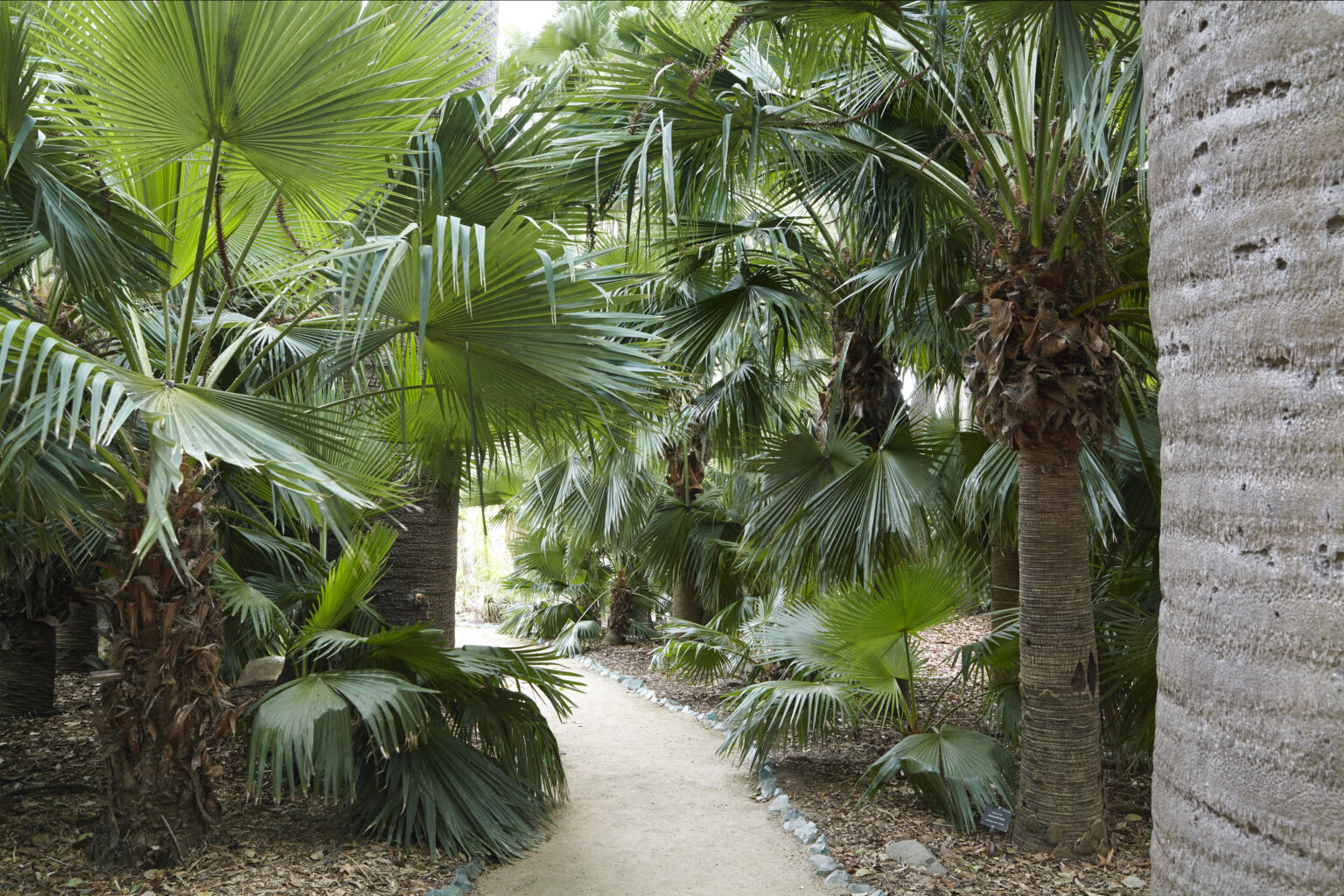
Guadalupe’s hesper palm is long-lived and, while the goats found its spineless seedlings tasty, they did not compromise the tree’s fibrous trunks, allowing them to persist in varied habitats the length of the island, those in the south the only arborescent vegetation for miles around. In the north, under tree canopy, watered by fog drip and winter rains, the palm thrives in shade or out on windy cliffs as an integral member of a pine-oak woodland; in the south, exposed along dry gullies in a maritime desert, it recalls its mainland Baja cousins Brahea armata and B. brandegeei. The palm happily straddles the island’s main climate zones, as if crossing from one floristic province to another and back again, taking root in both.
Resources
The American Geophysical Union has a timelapse video of satellite images that makes Guadalupe Island look like a planarian-shaped speedboat and the swirling stratus like a wake.
Aguirre-muñoz, A., A. Samaniego-Herrera, L. Luna-Mendoza, A. Ortiz-Alcaraz, M. Rodríguez-Malagón, F. Méndez-Sánchez, M. Félix-Lizárraga. 2011. “Island restoration in Mexico: ecological outcomes after systematic eradications of invasive mammals.” In Island invasives: eradications and management. Proceedings of the International Conference on Island Invasives (250–258). Gland: IUCN and Auckland: CBB.
Ashley, Mary V., Janet R. Backs, and Saji T. Abraham. 2016. “Landscape and Conservation Genetics of the Island Oak, Quercus tomentella.” International Oaks 27 (83–90). May 2016. [pdf]
Knapp, John and Michael Kauffmann, eds. 2017. Fremontia: Journal of the California Native Plant Society 45 (3). November 2017.
Mendoza, Luciana Luna, Alfonso Aguirre, Bradford Keitt, Steve Junak, and Bill Henry. 2007. “The restoration of Guadalupe Island, revisited.” Fremontia 35 (3). Summer 2007.
Moran, Reid. 1996. The Flora of Guadalupe Island. San Francisco: California Academy of Sciences.
Oberbauer, T., L. Luna Mendoza, N. Citlali Oliveres, L. Barbosa Deveze, I. Granillo Duarten, S.A. Morrison. 2009. “Fire on Guadalupe Island reveals some old wounds, and new opportunity.” Fremontia. July 2009.



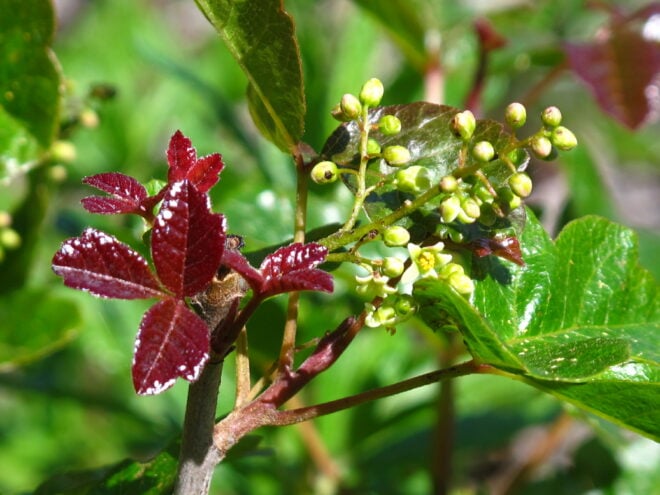








Responses